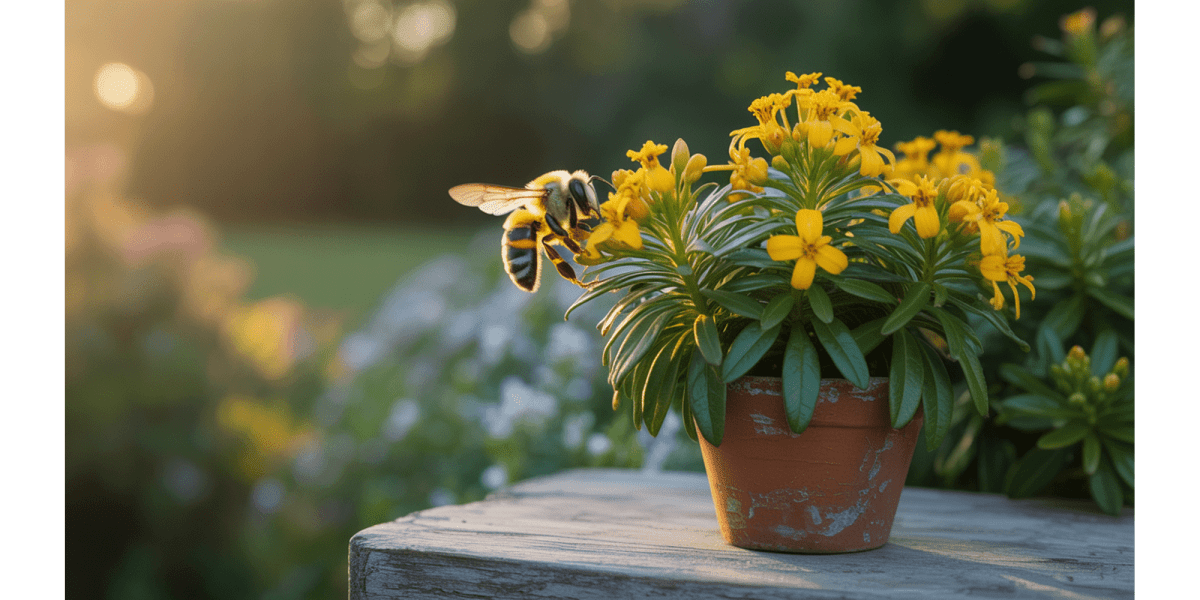Intro to Growing Thyallis in Your Garden:

A Golden Touch for Your Landscape
Thryallis, also known as Galphimia gracilis, is a tropical shrub prized for its bright yellow flowers, fine-textured green foliage, and graceful, upright form. Native to Mexico and parts of Central America, this fast-growing plant thrives in warm climates and adds vibrant color to flower beds, borders, and foundation plantings. It's especially popular in southern U.S. gardens and tropical landscapes for its reliability and showy blooms that persist for most of the year.
1. Choosing the Right Location
Thryallis thrives in full sun and performs best when it receives at least 6–8 hours of direct sunlight daily. Although it can tolerate partial shade, too much shade can reduce blooming and lead to leggy growth.
-
Best Zones: USDA Zones 9–11 (can be grown as an annual or container plant in colder climates)
-
Light Requirement: Full sun is ideal
-
Landscape Use: Hedges, borders, foundation plantings, butterfly gardens, or as a container specimen
🌿 Pro Tip: If planting in a container, place it in a sunny spot on your patio or balcony to encourage full blooming.
2. Soil Requirements
Thryallis is adaptable but performs best in well-drained soil. It doesn't require rich soil but appreciates a moderately fertile growing medium.
-
Soil Type: Sandy or loamy soils with good drainage
-
Soil pH: Slightly acidic to neutral (6.0–7.5)
-
Drainage Tip: Avoid areas with standing water; root rot can develop in soggy conditions
3. Planting Thryallis
Plant Thryallis in the spring or early summer once the danger of frost has passed. Give each plant enough room to spread, as it can grow 3–6 feet tall and wide.
Steps for Planting:
-
Dig a hole twice the width of the root ball and just as deep.
-
Loosen the root ball gently and place the plant in the hole.
-
Backfill with soil, pressing down lightly to remove air pockets.
-
Water thoroughly after planting.
-
Apply a 2- to 3-inch layer of mulch around the base (but not touching the stems) to retain moisture and suppress weeds.
4. Watering and Fertilizing
Thryallis is relatively drought-tolerant once established but benefits from regular watering during its first growing season.
Thryallis plants don't typically need fertilizers, but you can give them a little boost in the spring or summer to increase bloom production. You can fertilize with either general-purpose water-soluble feed or slow-release fertilizer.
Once established,thryallis is drought-tolerant and generally free from pests or diseases, making it an ideal choice for low-maintenance landscapes. Florida's Central and South Zones 9-11 are ideal growing zones for this shrub, though it may need additional water during dry spells of the season. It makes an attractive perennial border or can be combined with other flowering plants to create an eye-catching mass of color and texture.
Thryallis is an easy-to-grow shrub that can be propagated from seeds planted in spring or tender softwood cuttings taken during the summer. Once established, thryallis is pest-free except for occasional attacks by spider mites.
Thryallis is an easy-to-care-for plant that thrives in containers. All you need to do is provide it with some general potting soil, which can be found at most home and garden stores.
Maintain a balanced moisture level in the soil to prevent root rot. To prevent this, water your Thryallis plant only when the soil feels dry. Additionally, fertilize it three times a year with an excellent granular fertilizer.
You can prune your Thryallis plants to achieve a more even shape. Use hand loppers after the first frost and trim back any dead, old, or overcrowded stems up until the base of the branch collar.
-
Watering: Water deeply once or twice per week until established. Afterward, water during extended dry spells.
-
Fertilizing: Apply a balanced, slow-release fertilizer (10-10-10 or similar) in early spring and again in midsummer if growth slows or blooming diminishes.
💧 Avoid overwatering—let the soil dry out slightly between waterings.
5. Pruning and Maintenance
One of Thryallis's best features is its low-maintenance nature. It rarely requires heavy pruning.
If your Thryallis plants aren't quite what you expected, pruning may be necessary to achieve the desired shape. This could involve trimming back dead or diseased branches or for more severe applications like topiary arrangements.
Shape a shrub by pruning at least once annually during winter or autumn when new growth is visible. This technique, known as hard pruning, helps promote good plant health and encourages strong new growth.
This evergreen tropical shrub is native to the tropics, growing up to 9 feet tall and wide in warm areas where it serves as an ornamental hedge between zones 9B-11. The foliage is vibrant green with red stems of new shoots at the ends, blooming with clusters of yellow flowers in summer and fall.
-
Pruning Time: Late winter or early spring before new growth
-
Purpose: Remove dead or leggy stems, shape the plant, and promote fuller growth
-
Deadheading: Not necessary, as spent blooms fall naturally
✂️ Light pruning throughout the season can help maintain a tidy appearance.
6. Pest and Disease Resistance
Thryallis is generally resistant to pests and diseases. Its tough foliage and non-sappy stems make it unappealing to most insects and animals.
-
Occasional Issues: Spider mites or aphids may appear during extremely dry conditions
-
Treatment: A spray of insecticidal soap or neem oil usually clears up any infestations quickly
7. Winter Care Tips
In USDA Zones 9–11, Thryallis can stay in the ground year-round. In colder climates, it’s best treated as a container plant that can be brought indoors during winter or replanted each spring.
-
Frost Sensitivity: Light frost may damage leaves, but mature plants often regrow
-
Container Overwintering: Move indoors before temperatures drop below 40°F (4°C)
8. Companion Planting Ideas
Pair Thryallis with other warm-season favorites like:
-
Lantana: For more butterfly appeal and varied colors
-
Salvia: A bold purple or red contrast to yellow blooms
-
Plumbago: Light blue flowers that soften the golden tones
-
Ornamental grasses: Add texture and movement to your garden
Thryallis, also known as rain-of-gold or Galphimia glauca, is an easy-to-care shrub that adds year-round color to your landscape. It thrives best in full sun but will tolerate some shade if necessary.
This evergreen, clump-forming shrub is ideal for hedging or ornamental purposes. Its yellow flowers and charming cottage garden aesthetic make it an excellent addition to South Florida gardens.
9. Transplanting
Thryallis, commonly known as Rain-of-Gold, is an attractive shrub that can serve many purposes - screening plants for privacy, ground cover, or background plants for smaller focal plants. Its clusters of yellow stars appear from late summer through autumn.
Final Thoughts: A Bright and Breezy Shrub Worth Planting
Thryallis is an excellent choice for gardeners seeking easy-care color that lasts all season. With just a little sun and minimal attention, this sun-loving shrub rewards you with cheerful golden blooms and a tidy, attractive shape. Whether you're filling in a bare corner or designing a tropical-themed landscape, Thryallis is a beautiful and dependable addition to your outdoor space.
DISCLAIMER
This document is provided for general information purposes only and should not be relied upon as providing legal advice, technical, or specific operational guidance to the reader, whether as to the practices described in the document or the applicable legal requirements and regulations. lawnfly.com expressly disclaims any responsibility for liability arising from or related to the use or misuse of any information in this document.





